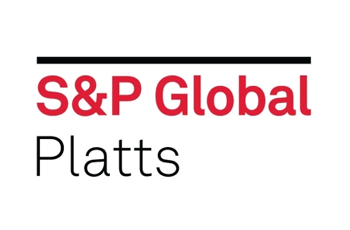U.S. Commercial Stocks Continue Falling

 Overall commercial stocks drew by 7.9 million barrels last week, placing the year-on-year stock deficit at 150 million barrels (-11.2%). Four-week average adjusted U.S. product demand is now up nearly 5% year-on-year or close to one million B/D. Higher demand helped push distillate storage down by 2.4 million barrels with other products falling by 3.9 million barrels, placing the overall product draw at -6.3 million barrels. Sharply lower crude oil imports led to the drop in crude stocks by 1.6 million barrels, with Cushing down by 2.7 million barrels. The Cushing deficit to last year now tops 33 million barrels, more than 50% below last season. For this week, Cushing is expected to see its first build in nine weeks of 0.8 million barrels. Overall crude stocks are anticipated to add 6.6 million barrels. Key light product stocks are expected to have a small net build this week.
Overall commercial stocks drew by 7.9 million barrels last week, placing the year-on-year stock deficit at 150 million barrels (-11.2%). Four-week average adjusted U.S. product demand is now up nearly 5% year-on-year or close to one million B/D. Higher demand helped push distillate storage down by 2.4 million barrels with other products falling by 3.9 million barrels, placing the overall product draw at -6.3 million barrels. Sharply lower crude oil imports led to the drop in crude stocks by 1.6 million barrels, with Cushing down by 2.7 million barrels. The Cushing deficit to last year now tops 33 million barrels, more than 50% below last season. For this week, Cushing is expected to see its first build in nine weeks of 0.8 million barrels. Overall crude stocks are anticipated to add 6.6 million barrels. Key light product stocks are expected to have a small net build this week.
North American Gas Regional Short-Term Forecast - February
There is potential downside risk to Chicago basis this summer given a flood of supply from the Northeast and neighboring regions and limited ability of the Midwest to absorb the excess gas or send it to the Gulf. The Permian’s ongoing push into western markets in light of the lack of takeaway capacity to the north, south, and east is expected to drive Waha to new lows.
Seasonal Demand to Drop Just as Rush of New Supply Readies to Ramp Up
The start-up of two large liquefaction projects and the resultant “oversupply” create a bearish outlook for JKM over 2Q-3Q 2018, which the price sensitive buyers will soak up, clearing any oversupply. While re-loads to Asia from Europe have been strong this year, the development of a negative NAO weather phenomenon may incentivize cargo diversions from Spain to NW Europe instead. The SWE-NWE spread is already showing signs of tightening following the weather news and could potentially delay injection season in SWE.
Cape Freight Rates Are Holding Relatively Flat but There Is Upward Potential
Cape freight rates held relatively steady before, during, and in the immediate aftermath of the Chinese New Year with the Baltic’s five-route Cape average now just above $13,500/day. However, the market remains expectant that as China’s restart gains momentum after the week-long holiday, it would provide another boost to rates. We have increased our outlook for short-term freight rates, although we remain bearish over the medium to long-term.
Fed and ECB Are Staying the Course, and Substantial Liquidity Injection From BOJ Will Continue
In reviewing monetary policy situations in the U.S., the Euro area, and Japan, there are similarities that stand out. First, all three jurisdictions are experiencing a combination of solid growth and low inflation, and the traditional economic relationship between unemployment and price changes, known as the Phillips curve, has effectively broken down. Policymakers at major developed world central banks, however, still rely on the Phillips curve framework to guide policy decisions. So economic data, particularly those on inflation, will continue to dictate monetary policy in 2018. Changes in key personnel are also happening at these central banks.
Japan Higher Runs, and Another Record Low for Product Stocks
The keys in the data for last week were another record low being set for finished product stocks, which was driven by another record low in gasoil. Against this backdrop, runs rose a marginal 33 MB/D, while crude imports fell back slightly and crude stocks drew -3.35 MMBbls. The seasonal inventory draw in products continues to be more aggressive than typically seen this time of year. Balances remain very constructive to cracks, though they did slip on the week. Kerosene demand was disappointing, and stocks drew only 19 MB/D, a significant slowing from the 141 MB/D rate seen previously. The implied refining margin slipped slightly on the week and remains mediocre. Low product stocks should provide support for a reversal. The indicative marketing margin again popped higher and has moved to above statistical highs. This has helped offset some of the slippage in refining.
NGL Prices Increase across the Board
Propane prices closed up a whopping 20.2% week-on-week due to strong demand at 1.65 million b/d and a 2.5 million barrel stock draw. Propane inventories are 16% below the five-year average. Raw mix NGL production settled over 4 million b/d, and the 4-plus million b/d production level is becoming the new standard. LPG exports fell to 780 thousand b/d for the week ended February 16. Platts expects LPG exports of 825 thousand b/d for the week ended February 23. A combination of higher NGL feedstock prices and lower olefin prices caused steam cracker feedstock margins to fall sharply last week for all feedstocks. With all U.S. steam crackers in operation and two new-build crackers in the commissioning phase, U.S. steam cracker NGL feedstock demand is expected to be robust.
Ethanol Output Higher
U.S. ethanol production jumped 52 MB/D to 1,068 MB/D the week ending February 16, rebounding from a five-week low. Stocks fell for the second straight week, dropping by 132 thousand barrels to 22.8 million barrels. The largest draw occurred in the Gulf Coast as large volumes of ethanol are being exported from the region. Ethanol-blended gasoline output was relatively flat, rising slightly to 8,776 MB/D from 8,768 MB/D in the preceding week.
That’s an Outlook?
Continuing the cursory manner in which corn and soybean acreage was estimated at Thursday’s USDA Outlook Forum, Friday’s “deep dive” proved to be little more than a swim in the shallow end of the pool. Carry out reductions of 80 million bushels in corn, 70 million in soybeans, and 78 million in wheat seemed all-too pedestrian in nature, leaving us with more questions than answers. Then again, that’s our job. While the acreage and yields are known stabs in the dark, the demand side of the balance sheet showed very little thoughtfulness in our opinion. S&P Global Platts Analytics will admit that the 90 million acres in corn and soybean plantings discussed Thursday is as good a place as any to start, but these numbers will go through a myriad of changes before Prospective Plantings at the end of next month and the Acreage report the end of June. So, too, with the 174 bpa USDA trend line yield in corn and 48.5 bpa in soybeans. No one knows what the weather will bring this year, but S&P Global Platts Analytics is of the opinion that these numbers should be looked upon as lower-end expectations based on yields over the past few years and “average weather”.
Testing the Limits...
The upcoming week will test the limits of the European gas market can do in terms of reliably delivering supply to end users. This week will not be a period in which to be short at any stage because so many things can go wrong. While the import and pipeline system has the ability to deliver the gas needed, the odds of something tripping up gas flows are higher than usual. Long gone are the days when Dutch and UK production/storage were capable of balancing market extremes. While Europe does have considerably more storage capacity than last decade and stocks are still just above the five-year normal, the reliance on incremental imports from Algeria, Norway, Russia, and LNG to balance the system will be at unprecedented levels.
Ukraine’s Industrial Gas Prices set to Fall
Naftogaz of Ukraine will reduce the price of natural gas for industrial consumers on a prepayment basis by 10.8% from March 1, 2018, the company's press service has reported. The price fall is applicable to consumers who purchase gas on a prepayment basis in the amount of over 50,000 cubic meters per month, subject to the absence of debt to the company, as well as 100% subsidiaries of the company. For other buyers, the price of gas from March 1 will decrease by 10.6%.
Asian Contract Formula Shifts Will Be Felt Most after This Year
While we cannot disclose the details of any confidential long-term supply contracts, it is still constructive to see the net effect of price exposure that LNG buyers are facing from a contract and spot price perspective. Are spot or contract volumes still more closely aligned to oil markers or are NBP, Henry Hub, or JKM emerging? The answer is that the market is clearly moving away from oil benchmarks and towards a more gas-on-gas pricing model that is taking shape and accelerating this year.
Cold Spell Leaves Upside Risk for the Month-Ahead French and German Contracts
As the cold spell is expected to be particularly severe and could last until early March, France might need to resort to net imports to be able to meet peak demand. If we assume the dispatch of nuclear at nearly full capacity, together with the maximum output from hydro and fossil fuels observed this year, France can only meet 86 GW of demand, while RTE forecasts that maximum hourly demand will be above this level every day next week. While next week could give better clues on how the French system would cope in a cold spell, it is surprising that the week-over-week uplift in month-ahead power prices has been quite limited, especially if put in the context of increasing gas prices.
Coal Prices Continue to Rebound; Chinese Stockpiles Build
Coal prices continued to rebound last week, with 2Q18 FOB Newcastle prices surging by over $5.00/mt week-over-week to $103.00/mt, just shy of the recent high posted at the end of January. Price gains for CIF ARA and FOB Richards Bay forwards were slightly smaller by comparison, and at $86.55/mt, 2Q18 CIF ARA is still approximately $6.00/mt below its recent high in January. Colder-than-normal conditions in key markets in both the Atlantic and the Pacific, coupled with a labor strike in South Africa and some weather-related production issues in Australia were likely the key drivers of the continued rebound in global pricing over last week.
New Proposed Trajectory for California Low Carbon Fuel Standard
With the release of unofficial Low Carbon Fuel Standard rulemaking documents on February 20th, CARB is proposing to smooth the near-term reduction trajectory starting in 2019, with a higher reduction target in 2030. This would relax the steep “hockey–stick” decreases in carbon intensity required by the current regulations and delay the headline 10% reduction to 2022. This move indicates a willingness by CARB to recognize the reality that the program is quickly moving from bank building to annual deficits. However, S&P Global Platts Analytics still believes the near-term balances will be tight. Larger reduction requirements towards 2030 will be subject to additional rounds of program reviews and potential adjustments. The new documents also clarify the regulatory timeline for the program amendments, expected to take effect next year. Finally, to address the 2017 court decision freezing the diesel standard of the LCFS, CARB is proposing changes to the Alternative Diesel Fuels regulations.
U.S. Gas Weekly Report
Henry Hub cash averaged $2.52/MMBtu for the week ended February 22, down 8 cents/MMBtu (3%) from the prior week as demand slumped from mild weather. As a result, cash was pushed to a low of $2.48/MMBtu over the four day weekend from February 17 –20, the lowest daily level since nearly one year ago on February 28, 2017. The March 2018 Henry Hub contract was buoyed to a high of $2.66/MMBtu on February 21, picking up 10 cents/MMBtu (4%) from last Friday’s settlement but has since been notched down to $2.63/MMBtu on February 22.
Papua New Guinea Earthquake Shuts in Oil and Gas Production
A magnitude 7.5 earthquake struck the Southern Highlands of Papua New Guinea early Sunday morning. Oil and gas production is concentrated in this region of the state, including the gas fields and pipeline that feed the PNG LNG plant. At least thirteen aftershocks have occurred since the main strike and have caused landslides. The earthquake knocked out communication networks in the remote and rugged area and forced the closing of roads and airports, limiting the availability of reports on damages and injuries. Casualties have not been confirmed but are expected.
Cross Currents Abound in Financial Stress
Despite the very strong showing on Friday, the S&P 500 gained only a modest 0.55% on the week. There are still a lot of cross currents evident. VIX volatility eased -14%, while oil volatility eased -9%. Energy was very strong in the commodity space, but industrial and precious metals eased. Despite the rally on Friday, high yield credit (HYG) eased modestly for the week. In an atypical move, the U.S. dollar gained 0.9% on the week, while energy was also able to perform well. The St. Louis financial stress indicator eased on the week after a sharp spike.
U.S. Ethanol Prices Surge
Ethanol manufacturing margins improved the week ending February 16 due to higher product prices. Exports remained strong. Ethanol’s discount to gasoline narrowed. Overall RIN generation was lower in January, but D6 RIN generation was higher. The European Commission reopened its investigation into the dumping of U.S. ethanol into Europe.
40?!
In the continuing game of How Low Can We Go, private estimators were out in force over the weekend pushing their Argentinean soy production estimates to new lows with last week’s 45M MT consensus now down to 40M MT, a loss of over 10% in just one week. Based on planting date data, there can be no argument that a critical growth stage is upon us yet S&P Global Platts Analytics still sees the crop in a 45-47M MT range against 47M MT last week and the February WASDE at 54M MT. While the production forecast cuts get all the headlines, a much less publicized fact, and the overriding reason for our continued skepticism that this rally lasts much longer, is that Argentina holds the largest global supply of ending stocks. At 36M MT, 37% of the global total, Argentina’s supply dwarfed the U.S. at 8.2M MT and Brazil at 25M MT at the conclusion of the 2016-2017 Marketing Year.
Cold Midwest Winter Appears Unlikely to Save Chicago Basis This Summer
Amid a collapse in basis across the country, Chicago has been one of the few hubs yet to buckle under the supply surge from the Permian and Northeast this coming summer. Working in its favor, this winter (up until the past week) has been one of the coldest in the Midwest the past five years, rivaling the polar vortex winter of 2013-2014. As a result, Midwest storage inventories have tumbled more than 150 Bcf below last year's mark and 60 Bcf less than the five-year average. However, recent mild weather and a relatively mild outlook for March suggests the incremental injection demand that is now expected this upcoming summer versus last summer in the Midwest is unlikely to be enough to keep Chicago basis afloat.
China’s Imports of Blending Components to Drop Sharply with the New Tax Change: Who are the Key Losers?
China imported substantial volumes of mixed aromatics (233 MB/D, of which roughly one third came from the West–especially European reformate) and FCC light cycle oil (113 MB/D) in 2017. These were mostly used by blenders to make gasoline and diesel/gasoil. This trade was facilitated by various tactics which allowed these components to effectively circumvent tax payments. However, the Chinese government announced that effective March 1st, tax regulations/enforcement will be tighter, likely subjecting these imports to the Consumption Tax which should severely curtail Chinese imports of these blending components. As much of the imports were for blending purposes (Jiangsu/Guangdong for MA and Guangdong/Zhejiang for LCO), it would seem that Chinese blenders would be hit harder by the new consumption tax than independent refiners in the Shandong province. Major supplying countries such as the Netherlands and key countries in Southeast and North Asia will need to find new outlets for their blending components.
Friday Rally Pulls Equity Markets Higher for the Week
Global equities rallied strongly on Friday, which pulled the performance higher on the week. In the U.S., the S&P 500 gained 0.6%. The strongest sectorial performers were technology (+1.7%), materials (+1.3%), and consumer discretionary (+1.1%). Energy was basically flat, while consumer staples declined -2.2%. Internationally, Latin America and China performed well and each gained about 2%.
The information above is part of PIRA Energy Group's weekly Energy Market Recap - which alerts readers to PIRA’s current analysis of energy markets around the world as well as the key economic and political factors driving those markets. To read PIRA’s Market Recap first, subscribe to PIRA Perspectives here.
Click here for additional information on PIRA’s global energy commodity market research services.


